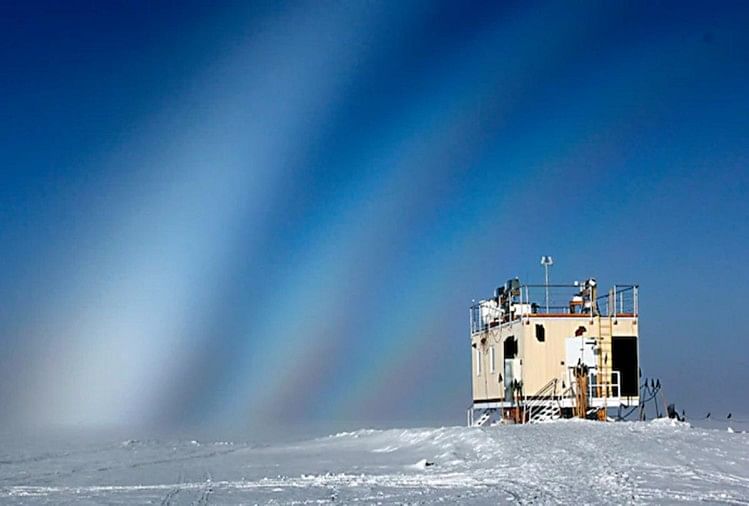UPDATE ON AUG 20, 01:40 PM IST
Scientists at Greenland's National Snow and Ice Data Center say this is the third time in a decade that the Arctic Research Station has recorded temperatures above freezing point in an area of the island.

The wide-ranging effects of climate change are now slowly coming to the fore around the world. Its latest effect was seen in Greenland, the world's largest island. Greenland, one of the coldest and snowiest areas in the world between the Arctic and Atlantic oceans, received heavy rain for several hours last week. The surprising thing is that there has never been any record of rain in the history of this country, although this time it rained on the highest icy surface of Greenland.
What was the reason for the rain in Greenland? Scientists confirmed rain in the higher reaches of Greenland on Wednesday. According to the report, snow usually falls throughout the year in Greenland. In this case, the mercury of the entire island remains below the freezing point (freezing point), which is the freezing point of water (0 °C). But the effect of climate change has now reached Greenland and due to this the mercury reached above the freezing point here, due to which the incident of rain was recorded for the first time.
Scientists at Greenland's National Snow and Ice Data Center say this is the third time in a decade that the Arctic Research Station has recorded temperatures above freezing point in an area of the island. It has been told that due to this rain, the ice sheet located on the southeast coast of the island has rapidly melted. This incident happened just after the rapid melting of snow in July. Scientists have now expressed concern over the continuous melting of ice in the Arctic, because of which the sea level is rising rapidly around the world.
7 billion tons of water fell on the icy surface at 10,551 feet above the sea According to the data center, the highest surface of Greenland is about 10,51 feet above sea level. The temperature here last week was recorded above freezing point. Estimates say that 7 billion tonnes of rain water fell on the icy surface in this region within just three days.
Let us tell you that 6 lakh 56 thousand square-mile snowy area of Greenland has been increasing and decreasing every year. However, due to global warming, the melting of ice has become very fast. Some climate models even say that if the current conditions remain intact, the Arctic Ocean may lose its ice cover by 2050.